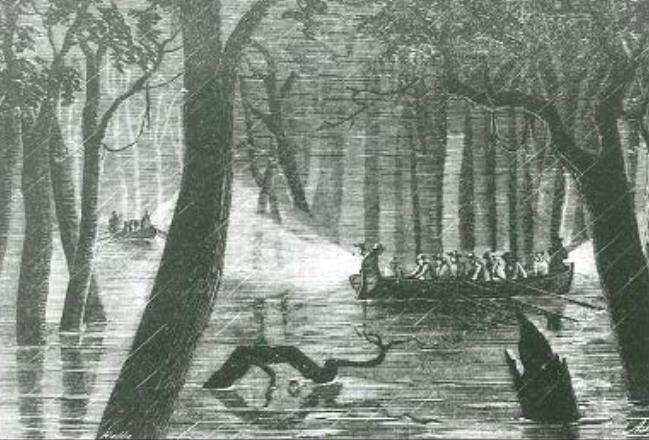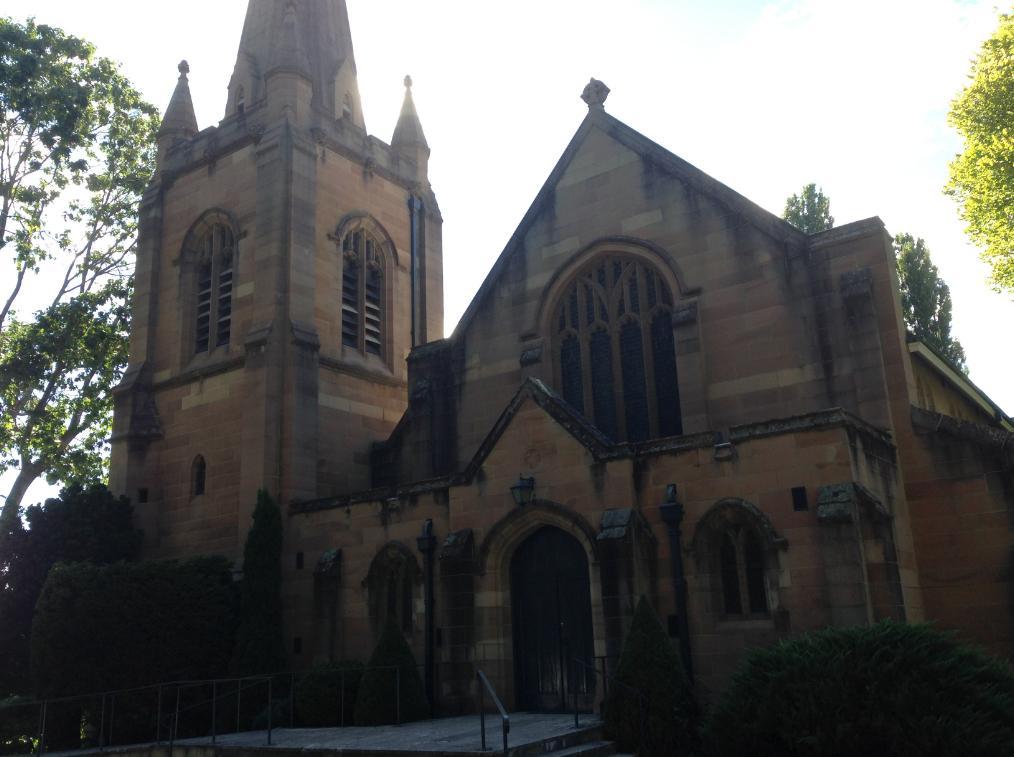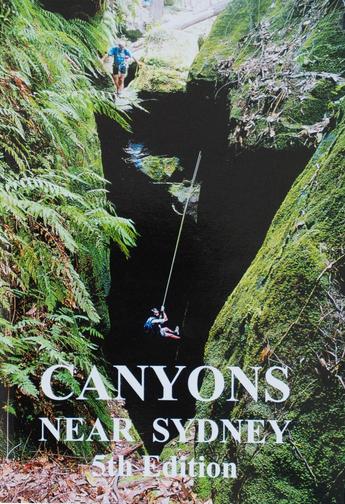Achtung! Amateur hour back at Wollangambe
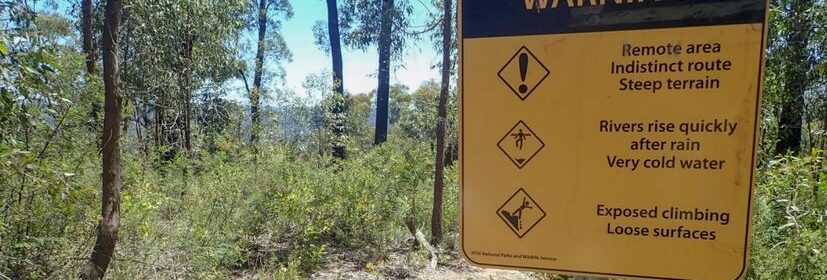
Wollangambe Canyon might need some more warning signage, if only people would heed the advice.
Two weeks after the so-called “whirlpool” tragedy on Saturday 2nd January, when two women drowned on a bushwalking club lilo trip, two more lilo tourists got themselves lost in the same canyon and had to be rescued. This time they were more downstream in what is imaginarily termed ‘Wollangambe 2’ or the ‘Lower Tourist Section’.
According to the local Gazette newspaper, last Saturday 16th January, two males had to be rescued from the same canyon. Apparently, they missed the usual exit points to the canyon, and instead liloed further downstream on the Wollangambe River Canyon, probably focused on enjoying the scenery more. Then they realised that they had gone too far to exit the river via a convenient access foot track to take them back up to the isolated village of Mount Wilson.
So they hopped off at Boronia Point on a big spur bend in the river. Unprepared and as it was getting late in the day and being scared of the dark, at around 7:20pm one of them decided to get a helicopter return flight and activated his personal locator beacon. It was an hour before dusk in balmy summer.
If these two had been genuine prepared adventurers, they could have continued downstream and camped at various beautiful river vantage points. Eventually chucking a right at the Colo River, then a left at the Hawkesbury River, they could have then hopped off at Wisemans Ferry, else completing their journey to Broken Bay and to the Pacific Ocean.
Epic fun! It’s been done.
But back up at Boronia Point the two lilo amateurs instead nannied to Police Rescue to mother them back home.
But due to the onset of darkness the rescue helicopter had to abandon, instead a ground party of Police Rescue, ambulance special operations and volunteer fire fighters were dispatched. The difficult terrain meant that it took five hours of night hiking and then wet canyoning to reach the lilo pair, who in the wee dark hours were poor shivering souls.
The rescue party stayed, cuddled and fed the pair in the canyon overnight, then at daylight the following day the two got their free helicopter rescue back to their familiar urban civilisation.
No insurance, no donations to the rescuers by the pair.
Blue Mountains Police Detective Brendan Bayliss made a wise public statement:
“Canyoning can be a dangerous activity after substantial rainfall has been received, and police urge canyoners to take this into consideration before engaging in this activity.”
Perhaps more so, canyoners and liloers alike should have prior skills training, experience and local familiarity, else secure professional and expert supervision. Else off-track adventurous tourists continue to be an ongoing burden for underfunded Police Rescue, clearly forced to rely on volunteer local searchers.
Three weeks prior, guest club members Jennifer Qi and Police Constable Kelly Foster died in the same Wollangambe Canyon within the Blue Mountains National Park. The underfunded Parks Service responsible turns a blind eye. They currently seem more policy concerned about the directional route hikers should take through the popular Grand Canyon track due apparently due to the pandemic. We expect to see Covid Marshalls soon out in the national park – mandatory COVID Safe QR check-in at Acacia Flat, Perrys, Ruined Castle and Kedumba campsites?
The two dead canyoners should still be here with us today living their normal lives; not in a hearse being commemorated at Lithgow’s Hoskins Church with a congregation of cars, bikes, marching officers, horses, and with a PolAir helicopter diverted to do a fly over.
These two women would surely have entrusted their sightseeing lilo trip with perceived canyoning professionals – duly qualified, experienced, properly equipped, recently familiar with the Wollangambe River Canyon.
Good tour governance ought to have ensured guest safety – a pre-recce a few days before, prior vetting of participants for risk assessment and competence, delivery of safety briefings, appropriate guide-guest ratio, contingency planning and close field leadership throughout the trip.
We got a few comments from our previous blog post reviewing the drowning tragedy in the canyon. One comment was by some club walker incensed that we may have a competing vested interest with unqualified clubs offering canyoning trips to the general public. No Flynny, we refer such adventure activities to the experts. They are the best to preserve the reputation of safe canyoning. And yes, we shall publish the coroner’s findings if made public.
Another comment received was by a canyoner more concerned about us borrowing a photo of his shoes while liloing. Your Dunlop Volleys now gone Tom.
Another coroner’s report will make interesting reading, many months away when the sad story is out of the public mind, but just read by the families and friends affected.
But what lessons will have been learned and applied to mitigate repetition? History repeats, as evident by the two liloing tourists lost in the canyon last Saturday. Was the advertised canyoning trip on the club’s website misleading by promoting it as an innocuous liloing?
Independent tourists doing dumb things will persist. Young people especially will continue to take risks and seek adventure as is the human psyche. Most of us have done the same.
Tourists with no adventure insurance who demand rescue when they underestimate the risks, get into strife and phone for help – just continue to be a blight on Blue Mountains tourism and a burden on its underfunded Police Rescue services. Each helicopter rescue costs what, $20,000 a mission?
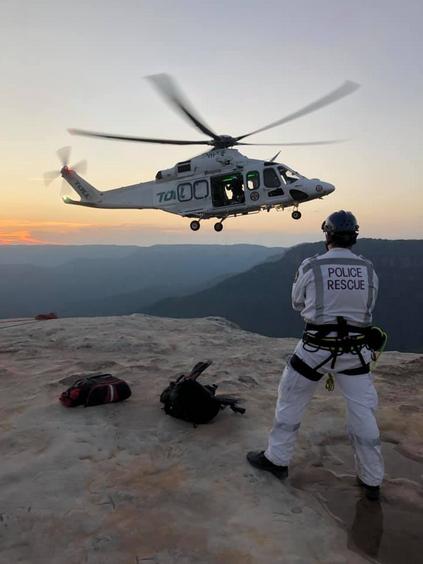 Walking clubs free-loading in national parks are not required to have professional standing or their own public liability insurance, let alone required to hold a NPWS eco-pass tour permit. Their personal accident insurance and public liability insurance is piggy-backed on their membership with Bushwalking NSW at a massively discounted rate. This is despite the fact that some member bushwalking clubs engage in the much higher risk-based canyoning activities and compete head on with professional canyon operators who pay far higher insurance premiums. Read More: http://www.bushwalkingaustralia.org/insurance/
Walking clubs free-loading in national parks are not required to have professional standing or their own public liability insurance, let alone required to hold a NPWS eco-pass tour permit. Their personal accident insurance and public liability insurance is piggy-backed on their membership with Bushwalking NSW at a massively discounted rate. This is despite the fact that some member bushwalking clubs engage in the much higher risk-based canyoning activities and compete head on with professional canyon operators who pay far higher insurance premiums. Read More: http://www.bushwalkingaustralia.org/insurance/
This bushwalking organisation even promotes canyoning in the Wollangambe River Canyon on its website: https://bushwalkingnsw.com/walk.php?nid=786. Should it not be qualified and experienced to do so?
National Parks deaths will continue under such dodgy loopholes. Canyoning hazards, risk management and wisdom seem not to be out there. Circumstances of tourist deaths and coroners’ findings tend to be get filed and then forgotten.
That same weekend a group of five tourists were rescued from Rocky Creek in the Newnes Plateau area, after Police Rescue recovered the body of a man liloing in the downstream nearby Colo River near Grassy Hill Trail who had drowned after his lilo became wedged on a submerged rock.
The coroner will be surely busy.
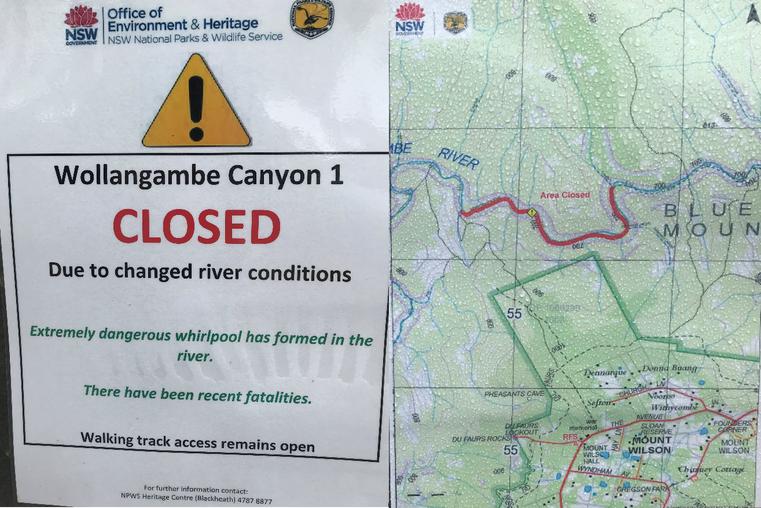 It takes a fatality or two for the Parks Service to react, the same way that the Roads Authority puts in traffic lights at dangerous highway intersections only after fatalities.
It takes a fatality or two for the Parks Service to react, the same way that the Roads Authority puts in traffic lights at dangerous highway intersections only after fatalities.
In 2010, Nick Delaney (15) was killed while canyoning with family and friends at Wollangambe Canyon, with no PLB. He was killed by a rock collapse at the so-called beginners section dubbed ‘Whungee Wheenge Canyon’.
Inspector Max Wallace said 50 searchers, including volunteers, national parks rangers and emergency services personnel had trawled an area of about 20sq km around the Wollangambe Canyon. It took paramedics and a police five hours to trek through the night to the scene of the fatal accident. Again, a report was prepared for the coroner but never made public. Wollangambe River continues to be popular with lilo canyoners who blow up inflatable mats to paddle downstream.
Back in 2002 on a Saturday, three friends John Kovicz (37), Rafal Kastrzak (29),and Daniusz Sadowski (34) went canyoning at so-called ‘beginners’ Hole in the Wall Canyon on Bungleboori Creek in the Newnes State Forest. But they got lost and decided to bush bash to work out where they were, only to become benighted.
At dawn the next day, they descended into a canyon by rope but the rope got caught in a crack in the rock face. So they decided to cut the rope. This shortened length forced them to take another route down into the canyon. But Mr Sadowski fell 20 metres and tragically died from chest injuries he sustained. It wasn’t until nearly 7pm on the Monday evening that Mr Sadowski’s wife reported the trio missing.
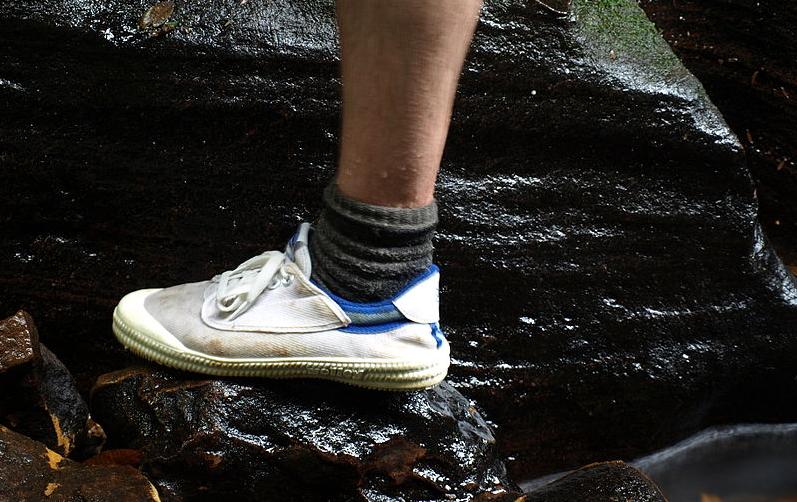
Dunlop Volleys, the prescribed kit of Baby Boomer clubbers, as with turning up in a Subaru Forester or Outback

